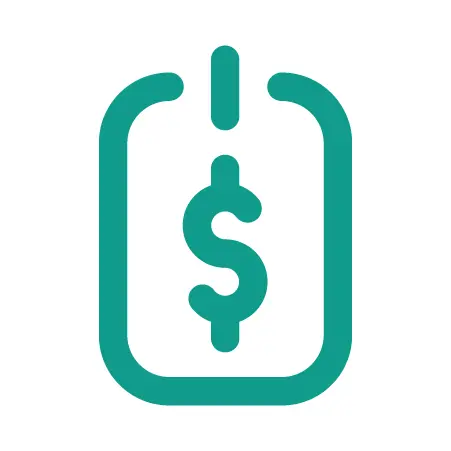- PRODUCT

Restaurant POS
Scalable restaurant POS system for global chains
Tablet Ordering
Elevate guest experience with server app
Customer Order Display
Real-time customer interaction and order enhancement
Table Layout
Efficient table management for optimizing turnover
Restaurant reservation Software
Simplify table bookings to enhance guest experience & operational efficiency.

Inventory Management
Streamline inventory, reduce waste, boost profitability
Base Kitchen
Central kitchen software to optimize operations
Recipe Management
Accurate kitchen ingredient tracking for waste reduction
Supply chain management
Stress-free logistics with our restaurant supply software

Kitchen Display System
Tame kitchen chaos with kitchen display system
kitchen production system
Future-ready kitchen production system
forecasting
Accurately forecast demand and optimize your inventory

RESTROWORKS MARKETPLACE
Grow with Restroworks
tECHNOLOGY Partnership
Efficient integrations for hot, fresh food delivery

Restaurant Analytics Software
Gain insights that drive growth
Cockpit App
Real-time insights on the go
Enteprise Reporting
200+ reports for data-driven restaurant success
Anti theft
Prevent theft, protect restaurant profits with anti-theft software

SELF SERVICE KIOSK
RestroGO hardware agnostic self-service kiosk software
QR CODE ORDERING
RestroScan table and takeaway QR code ordering
FOOD DELIVERY APP
RestroAPP branded app for Takeout & Delivery
ONLINE ORDERING WEBSITE
RestroWEB, your branded online ordering website
- PLATFORM

API
Empower your integrations with our open API

Solution Architecture
360° success view for scalable profitability.

Security & Compliance
Data security beyond global standards

ERPs
ERP integration made seamless

Menu Management
Create and manage seamless menus across all your locations

API
Empower your integrations with our open API

Solution Architecture
360° success view for scalable profitability.

Security & Compliance
Data security beyond global standards

ERPs
ERP integration made seamless

Menu Management
Manage menus of all your locations with ease
- SOLUTIONSBy Role
Serving simplicity to IT, ops, finance and more

information technology
Deploy, manage POS, track sales, inventory, generate reports

OPERATIONS
Empower operations for efficient, profitable restaurant management

Finance
Real-time outlet numbers always at your fingertips.

Owner
Manage recipes, costs, expenses, and prevent theft remotely

Franchise
One solution for multiple regions and outlets
By FormatAdaptable cloud solution for effective restaurant management

FINE DINE
Serve delicacies that delight customers

QSR
Comprehensive cloud-based QSR software solution

Cloud Kitchen
Coordinate multiple kitchens and aggregators

FAST CASUAL
Quick turn around time like no other

HOTELS
Serve happiness with hospitality like never before

FOOD Court
Efficiency for high-traffic food court management

Bars and pubs
Elevate your ambiance with our bar management solutions

Catering
Unleash culinary creativity with our catering management excellence

Cafe
Brew success with our cafe-centric management innovations

Drive-thru
Drive efficiency with our streamlined drive-thru management suite
- PARTNER
- RESOURCESEXPLORE
- COMPANY
About us
Meet Restroworks! A leading unified restaurant technology
platform that empowers global chains to thriveCareers Current Opening
Explore job openings at Restroworks
Events
Explore where Restroworks software is
making waves in the restaurant world.Newsroom
Read the latest and greatest from the Restroworks family
Compliance
Security, privacy, and compliance at Restroworks
- Let’s Talk
- Get Demo
GLOSSARY
Predictive Analytics
Predictive Analytics uses trends in sales, guest behavior, and operational data to forecast demand, plan inventory more effectively, and align staffing with expected traffic. This leads to fewer shortages, better prep timing, and more efficient service during peak hours.
What is Predictive Analysis?
Predictive analytics refers to the use of data-driven models that identify patterns from past performance and use them to forecast future outcomes. In the context of a restaurant, this could mean anticipating guest traffic on specific days, forecasting ingredient usage, or predicting which menu items are likely to perform well in a given season.
This proactive planning helps restaurants improve efficiency, reduce waste, and enhance the guest experience.
Components of Predictive Analytics
- Historical Performance Data: Data from past sales, customer visits, weather patterns, holidays, and promotional periods forms the foundation for accurate forecasting.
- Machine Learning Algorithms: These systems analyze complex data sets to identify correlations and patterns that may not be obvious through manual analysis.
- Integrated Data Sources: Predictive tools pull inputs from multiple restaurant systems such as POS, CRM, online ordering platforms, and staffing schedules to generate holistic forecasts.
- Scenario Modeling Tools: Restaurants can run simulations to understand how different decisions or external factors (like a price change or event) might impact business outcomes.
- Visualization Dashboards: Clear visual reports allow operators to view demand forecasts, sales predictions, or labor needs in a user-friendly format.
How to Implement Predictive Analytics Effectively?
- Establish Clear Forecasting Goals: Restaurants need to define what they want to predict, like customer demand, labor needs, or product performance to tailor analytics efforts accordingly.
- Collect Historical Data: The more accurate and consistent the past data, the more reliable the predictions. It’s important to centralize and clean data from various systems.
- Integrate Tools with Existing Restaurant Systems: Connecting the analytics engine with POS, inventory, and or kitchen production platforms ensures seamless data flow and real-time insights.
- Review Predictions Against Actual Results: Comparing forecasts with real-world performance helps refine models, improve accuracy, and build operator trust in the system.
- Use Insights to Support Operational Decisions: Predictive outputs should be embedded into day-to-day planning, from deciding how much produce to order to adjusting staffing levels for expected rushes.
Benefits of Predictive Analytics:
- Improved Demand Forecasting: Anticipating busy days, meal trends, or seasonal shifts helps restaurants prepare better and reduce last-minute resource strain.
- More Accurate Inventory Planning: Forecasts guide procurement decisions, minimizing overstocking or underordering, and reducing food waste and spoilage.
- Optimized Labor Scheduling: Predictive insights allow managers to align staffing with expected footfall, balancing labor costs with service quality.
- Enhanced Marketing: Understanding customer patterns helps operators launch targeted promotions or offers when they’re most likely to drive results.
- Reduced Operational Inefficiencies: Planning ahead using predictive data leads to smoother kitchen operations, fewer shortages, and less reliance on reactive decisions.
Predictive analytics empowers restaurants to plan smarter by turning past data into future-ready decisions. From optimizing daily operations to shaping long-term growth strategies, it’s a powerful tool for staying ahead in a fast-moving industry.





